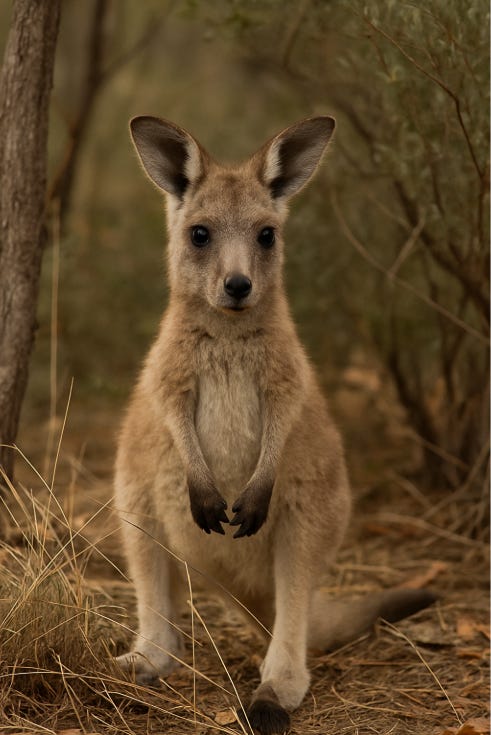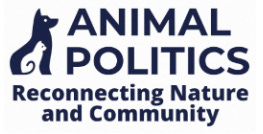From Victory to Vigilance: Ending Kangaroo Leather Is Just the Beginning
A global win for animal welfare exposes the deeper challenge of compassionate coexistence.
In a major win for animal welfare, Japanese sportswear giant Mizuno has just announced it will no longer use kangaroo leather in its athletic shoes—prompting celebration among animal welfare advocates worldwide.
The decision, following similar moves by Adidas and ASICS, was the culmination of years of relentless campaigning by the Center for a Humane Economy and Animal Wellness Action. Their “Kangaroos Are Not Shoes” initiative, launched in 2020, mobilized global support, pressured industry leaders, and ultimately persuaded all of the world’s top athletic brands to abandon kangaroo skins.
A Milestone in Ethical Consumerism
Wayne Pacelle, president of the Center for a Humane Economy, underscored the significance in an official statement: “Major athletic companies have been funding, through their purchases of skins, the largest massacre of native wildlife in the world, and it was time for all of them to clean up this moral mess.” The campaign’s success was amplified by grassroots activism, coalition-building, and public demonstrations that brought the issue to the forefront of global consciousness.
For animal advocates, this was a hard-won victory—proof that sustained public pressure and ethical consumerism can drive meaningful change at the highest levels of global commerce. In the eyes of many, the end of kangaroo leather in major athletic shoes marks a new era of corporate responsibility and compassion.

The Complex Reality Behind the Celebration
Yet, as the world celebrates, a more complicated reality unfolds across the Australian landscape. Kangaroo populations, once considered at risk in some areas, now number in the tens of millions—sometimes outstripping the country’s human population.
In 2023, government aerial surveys recorded over 40 million kangaroos across commercial harvesting zones in Queensland, New South Wales, South Australia, and Western Australia—more than the estimated 26 million people in all of Australia. Kangaroo numbers fluctuate widely in response to rainfall and food availability, a natural boom-bust cycle intensified by human interventions—removal of dingoes, creation of artificial water points, and land clearing for agriculture.
While some ecologists warn that large kangaroo populations may strain fragile ecosystems—stripping vegetation, degrading soils, and outcompeting other species—others argue that such claims are overstated or politically motivated. What’s clear is that during drought, kangaroos suffer profoundly: as food vanishes, mass die-offs occur, with emaciated adults and orphaned joeys becoming a haunting counterpoint to the iconic image of the bounding marsupial.
“It’s a brutal cycle,” said Dr. Katherine Moseby, an ecologist who has studied kangaroo populations for decades. “When conditions turn, you see mass die-offs—animals dying of hunger, joeys orphaned and left to perish. It’s a level of suffering that’s hard to imagine.”
A Broken System of Management
For years, Australia’s commercial kangaroo harvest—licensed under government quotas and management plans—was promoted as a population check. Advocates of regulated harvesting—government-sanctioned killing—argued that, while imperfect, it offered a degree of oversight and logistical efficiency that ad hoc methods lacked. But the commercial kangaroo-killing industry was also marred by controversy. Independent investigations revealed repeated breaches of animal welfare codes, inconsistent enforcement, and the inherent brutality of orphaning dependent joeys
As global brands bowed to public pressure and withdrew from the trade, the market for kangaroo leather contracted. But the broader consequences of this shift remain unresolved. Without commercial incentives, population management responsibilities increasingly fall to landholders and under-resourced government agencies. These non-commercial culls (targeted killings to reduce population)—often reactive, uncoordinated, and lacking adequate oversight—risk exacerbating animal suffering rather than reducing it.
Humane Alternatives—And Their Limits
Alternatives like fertility control and exclusion fencing offer more humane, long-term solutions, but they face logistical and financial barriers—especially across the vast, semi-arid landscapes where kangaroos roam.
Trials in New South Wales have shown some promise for fertility control among isolated populations, while targeted fencing has protected biodiversity hotspots and revegetation zones. However, wide-scale implementation remains elusive without substantial public investment and cross-sector collaboration.
The Paradox of Progress
This is the paradox at the heart of Australia’s kangaroo conundrum: reforms that reduce one form of suffering—industrial-scale commercial killing—may unintentionally contribute to another: unmanaged population spikes followed by mass die-offs. The situation underscores the urgent need for evidence-based, ethically grounded wildlife management rooted in the principles of Compassionate Conservation.
Challenging the Myth of Overpopulation
While some Australian officials and industry stakeholders—such as commercial harvesters and kangaroo leather exporters—frame kangaroo culling as an ecological necessity, animal welfare experts strongly dispute this narrative. “Kangaroos have lived on the Australian continent for at least 15 million years—98 percent of that time without any significant human predation,” notes Pacelle. “The idea that these vegetarian animals are a problem is more about social tolerance than science.”
Indeed, Pacelle points to the absurdity of current state quotas, which are rarely met. “Last year, commercial shooters hit only 18% of the government’s kill quota. That doesn’t support the argument for overpopulation—it undermines it.”
He further argues that the commercial incentive is the true engine behind the kill. “Skins are the motivator. The meat is often considered unsafe, and the pet food market is small. Eliminate the leather market, and you remove the profit motive.” This critique underscores why eliminating demand—especially from global brands—is such a powerful lever for change.
A Positive Path Forward
Pacelle’s point is borne out by the recent progress achieved by advocates and industry leaders. Mizuno’s decision—alongside those of Adidas, ASICS, and others—demonstrates the power of sustained advocacy and ethical consumer demand to shape global supply chains. It also marks a turning point in corporate ethics.
But ending industrial exploitation is only part of the solution. Compassionate Conservation calls for coexistence strategies that reject false binaries—between exploitation and neglect, between commerce and starvation. Instead, it promotes science-based, non-lethal approaches that prioritize both individual animal welfare and ecosystem resilience. This framing is especially critical when considering the widely accepted yet poorly evidenced notion that kangaroo culling is essential for ecological balance.
As Australia navigates the challenge of balancing ecological health, animal welfare, and agricultural needs, the Mizuno story stands as both a triumph and a call to deeper responsibility. The path forward lies not in turning away from complexity, but in embracing it—with humility, innovation, and a renewed commitment to protect all life with compassion and care.
From Protest to Policy
With their demonstrated success in ending the corporate cruelty of commercial kangaroo killing, organizations like the Center for a Humane Economy and Animal Wellness Action have laid a critical foundation. Now, they are uniquely positioned to help initiate a broader conversation—one that brings together Indigenous land stewards, ecologists, animal advocates, and policymakers. Together, they could help forge a new, humane model of kangaroo stewardship—rooted not only in compassion and ecological reality, but also in a broader social tolerance for native wildlife in a land long dominated by livestock and commercial interests.
Ending the killing isn’t enough. Real compassion demands sustained engagement with the lives we’ve chosen to protect. The end of industrial exploitation is a milestone—but the true test lies in what comes next.
Ed Boks is a former Executive Director of the New York City, City of Los Angeles, and Maricopa County Animal Care & Control Departments, and a former Board Director of the National Animal Control Association. His work has been published in the LA Times, New York Times, Newsweek, Real Clear Policy, Sentient Media, and now on Animal Politics with Ed Boks.
Stay Informed
For more analysis and updates on the evolving landscape of animal welfare policy, visit Animal Politics with Ed Boks.





If humans did not destroy habitats and mess with nature as much, it would balance itself out. We can’t take away animals land and then complain about them overtaking the area. Nature does not need human intervention. This has been proven time and again. It was seen during Covid when the world stood still and animals started to roam without human interference. All the talk of needing to cull and arguments between government groups is ridiculous and politically motivated imo.
Great reporting, @Ed Boks, keep informing people. Awareness makes it more difficult to accomplish harm.
You and your subscribers may enjoy an interview I did with Wayne Pacelle, of Animal Wellness Action, who discussed his work with their "Kangaroos are Not Shoes" campaign.
"Animal Wellness Action" - by Robin Motzer - Wildlands, February 7, 2024. I've worked with Wayne (and continue to work with him and others) to end cruelty for animals. And I am expanding my work world-wide with a trip to Norway this Summer. I have collaborative community projects in several States- all are welcome to participate. Stop by and say hi: https://robinmotzer.substack.com/p/animal-wellness-action
Keep up the great work to increase accountability, compassion and empathy!